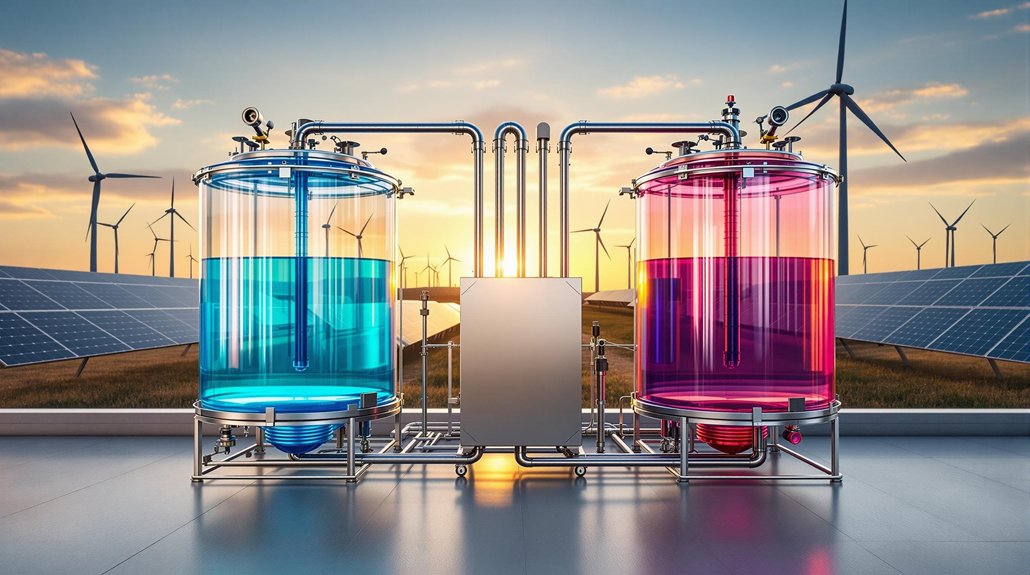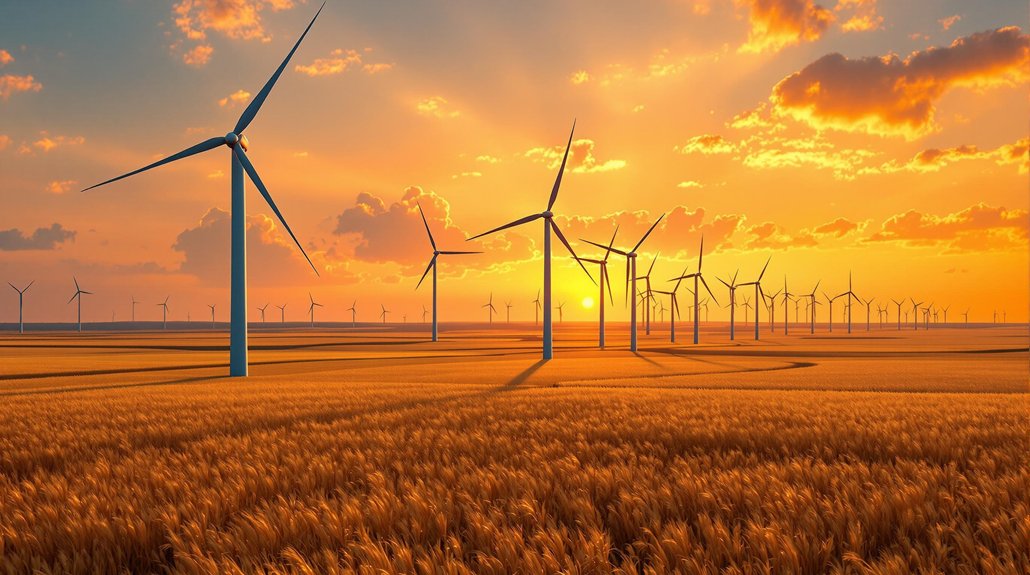Hydroelectric power transforms falling water into electricity with impressive efficiency – converting up to 90% of energy compared to fossil fuels’ measly 50%. It currently generates 16% of global electricity, with major players like China and Brazil leading the charge. While dams can disrupt ecosystems, hydropower prevents burning 22 billion gallons of oil annually. From ancient Greek water wheels to modern mega-dams, this renewable giant keeps evolving – and there’s more beneath the surface.

A towering wall of concrete and steel, stretching across a mighty river – that’s hydroelectric power in its most iconic form. This powerhouse of renewable energy accounts for 16% of global electricity generation, with China, Brazil, and the USA leading the charge. And here’s a mind-bending fact: hydropower prevents burning 22 billion gallons of oil annually. That’s not just a drop in the bucket.
The journey to modern hydropower is quite the tale. Ancient Greeks used water wheels to grind wheat – pretty basic stuff. But things got serious at Niagara Falls in 1879 with the first hydroelectric plant. Fast forward to today, and Norway’s crushing it, generating 99% of its electricity from hydropower. Talk about overachievement. Early hydropower construction was actively supported by the federal government to kickstart American energy independence.
From ancient water wheels to modern mega-dams, hydropower’s evolution shows how far we’ve come in harnessing nature’s mighty rivers.
These facilities come in all shapes and sizes. From massive dams to run-of-river systems, and even futuristic tidal energy setups. The efficiency is impressive – hydropower turbines convert up to 90% of energy into electricity, while fossil fuel plants barely manage 50%. Modern facilities use two separate reservoirs to store and generate power as needed. The grid stabilization capabilities make hydropower essential for supporting wind and solar energy integration.
Sure, building these behemoths can cost over $1 billion, but the running costs are surprisingly modest.
Environmental impact? It’s complicated. While hydropower produces minimal pollution compared to fossil fuels, it’s not exactly a fish’s best friend. Dams can mess with river ecosystems and migration patterns. Those large reservoirs? They’re secretly releasing methane from decomposing vegetation. Nature always finds a way to keep us humble.
Looking ahead, we’ve got our work cut out. Global hydroelectric capacity needs to grow 60% by 2050 to meet climate goals. That’s a tall order, especially since only 3% of U.S. dams currently generate power.
Small, modular concepts are in development, with $3.5 billion earmarked for small hydropower technology in 2015. The industry’s heavily regulated, which makes building new facilities about as easy as herding cats – especially for smaller nations.
But with innovations in technology and integration with other renewables, hydropower’s future might just flow smoother than expected.








